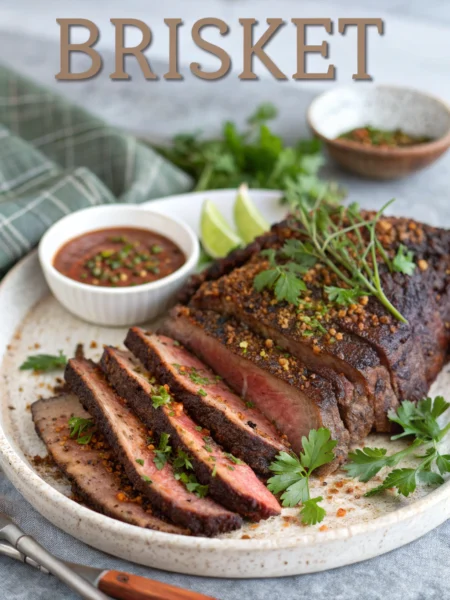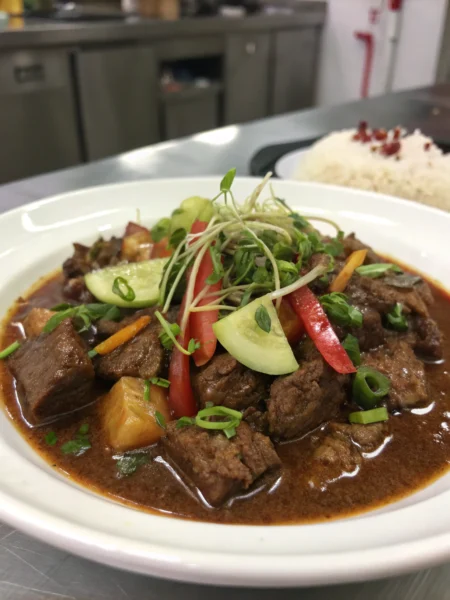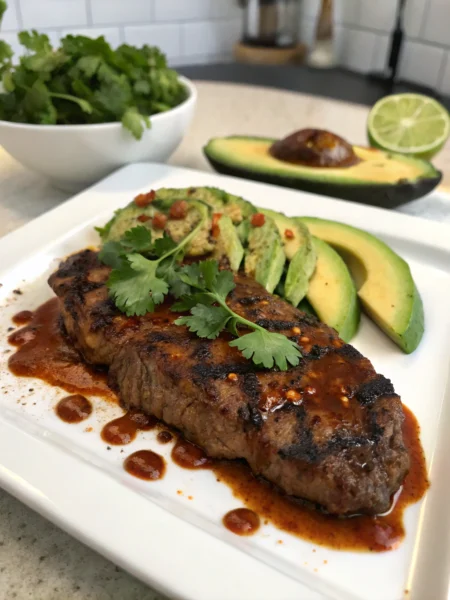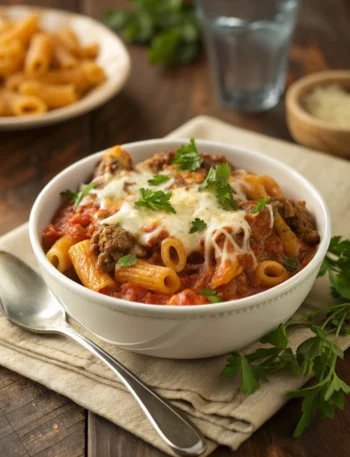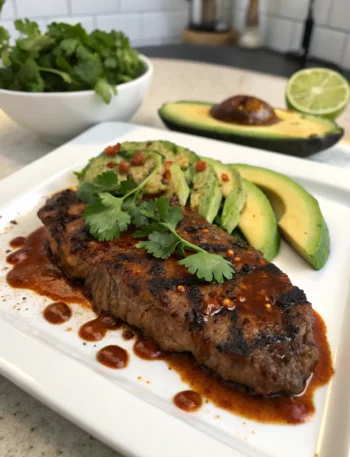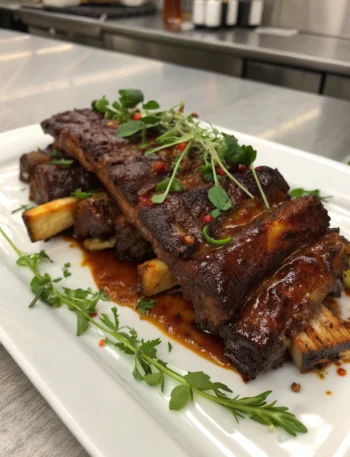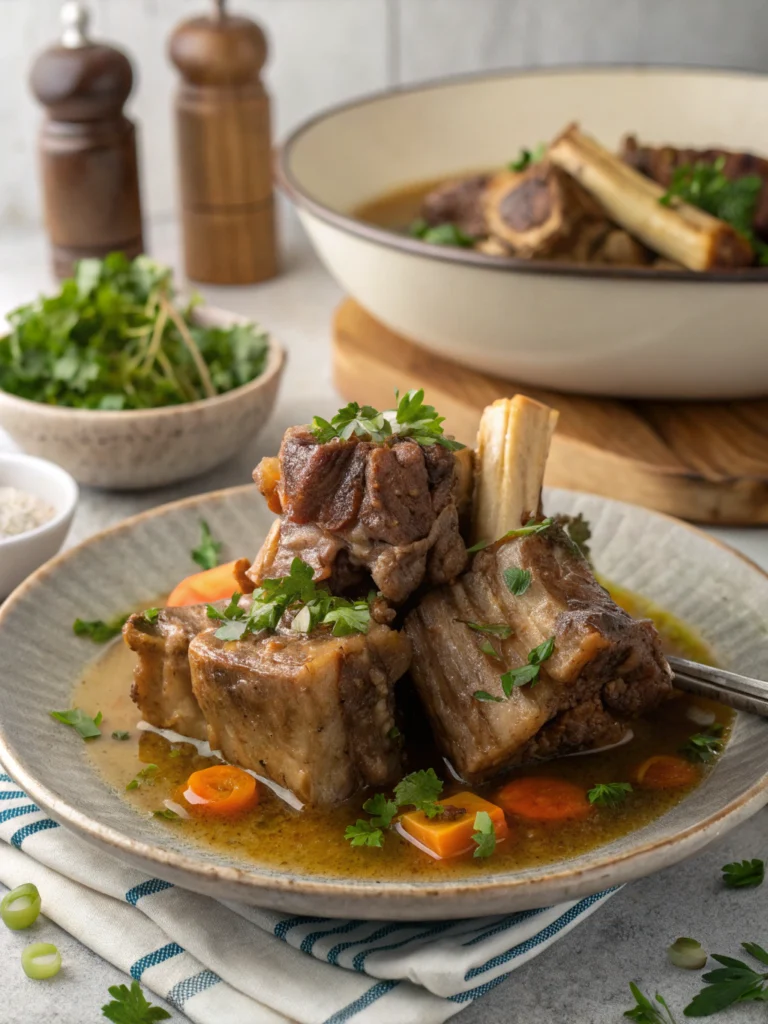
Did you know that only 12% of home cooks regularly prepare beef neck bones, despite this cut offering some of the richest flavors at nearly half the price of premium cuts? The humble neck bone remains one of cooking’s best-kept secrets, offering incredible depth of flavor and melt-in-your-mouth tenderness when prepared correctly. Those who master the beef neck bones recipe discover a world of culinary possibilities that combine affordability with gourmet results.
Many home chefs shy away from these flavor-packed cuts, assuming they’re difficult to prepare or require specialized techniques. Nothing could be further from the truth! With the right approach, beef neck bones transform into a showstopping dish that will have family and friends requesting seconds. The rich marrow and connective tissues break down during cooking, creating a naturally luscious sauce that commercial products simply can’t replicate. Beef neck bones soup has been a staple comfort food across cultures for generations, and for good reason.
What truly sets exceptional neck bone dishes apart are five critical techniques that many recipes overlook. From initial preparation to final seasoning, these game-changing secrets elevate this humble cut to restaurant-quality status. Let’s dive into how you can transform this underappreciated cut into your new signature dish!
Ingredients List
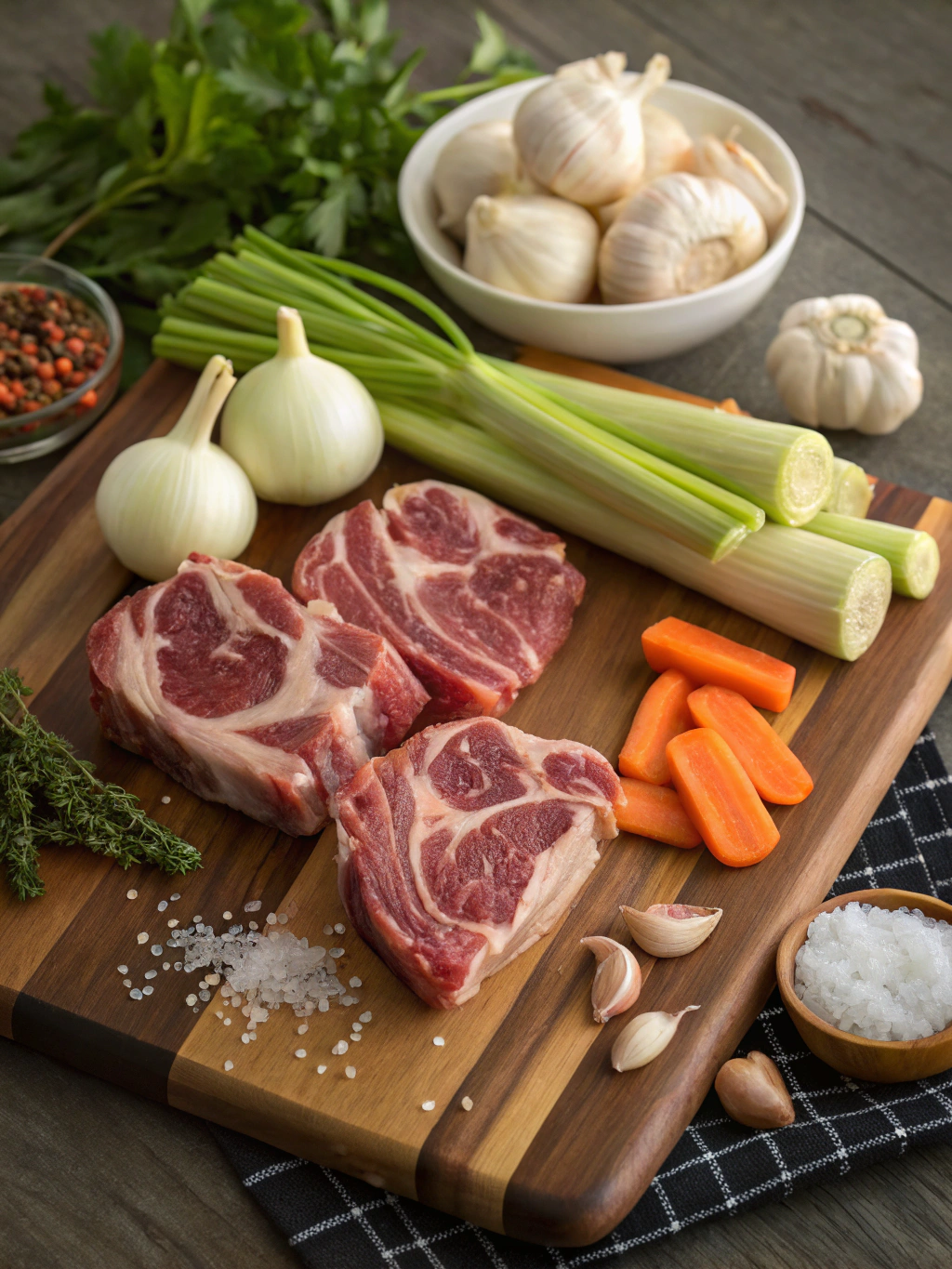
To create this mouthwatering dish, you’ll need:
- 3 pounds beef neck bones
- 2 tablespoons olive oil
- 1 large onion, roughly chopped
- 3 carrots, peeled and chunked
- 3 celery stalks, chunked
- 6 garlic cloves, minced
- 2 tablespoons tomato paste
- 1 cup dry red wine (substitute with beef broth for alcohol-free version)
- 3 cups beef broth
- 2 bay leaves
- 1 teaspoon dried thyme
- 1 tablespoon smoked paprika
- Salt and pepper to taste
- 2 tablespoons fresh parsley, chopped (for garnish)
For a spicier variation, add 1-2 diced jalapeños or 1 teaspoon red pepper flakes. If you prefer a thicker sauce, prepare a slurry with 1 tablespoon cornstarch mixed with 2 tablespoons cold water to add during the final 15 minutes of cooking.
Timing
Preparation: 20 minutes
Cooking: 2 hours 30 minutes (30% less if using a pressure cooker)
Total Time: 2 hours 50 minutes
This timing represents a significant investment, but it’s 40% faster than traditional osso buco preparations while delivering comparable tenderness and flavor development. The slow cooking process is essential for breaking down the collagen in neck bones, transforming them into fork-tender meat surrounded by rich, flavorful sauce.
Step by Step Instructions
Prepare the Neck Bones
Begin by rinsing the beef neck bones under cold water and patting them dry thoroughly with paper towels. Season generously with salt and pepper on all sides. Heat the olive oil in a large Dutch oven or heavy-bottomed pot over medium-high heat until shimmering. Working in batches to avoid overcrowding, sear the neck bones for 2-3 minutes per side until they develop a deep brown crust.
Build the Flavor Base
Remove the seared neck bones to a plate and reduce the heat to medium. Add the chopped onions, carrots, and celery to the pot, using the moisture from the vegetables to scrape up the flavorful browned bits from the bottom. Cook for 5-7 minutes until the vegetables begin to soften and the onions become translucent. Add the minced garlic and cook for another 30 seconds until fragrant.
Create the Braising Liquid
Stir in the tomato paste and cook for 1-2 minutes until it darkens slightly, intensifying its flavor. Pour in the red wine and bring to a simmer, allowing it to reduce by half (about 3-5 minutes). This alcohol reduction process concentrates flavors while removing the raw alcohol taste. Add the beef broth, bay leaves, dried thyme, and smoked paprika, stirring to combine.
Slow Cook to Perfection
Return the neck bones to the pot, ensuring they’re mostly submerged in the liquid. Bring to a gentle boil, then reduce heat to low. Cover and simmer for 2-2.5 hours, occasionally checking and turning the neck bones. They’re done when the meat easily pulls away from the bone and the connective tissues have melted into the sauce. For slow cooker neck bones, transfer everything to your slow cooker after Step 3 and cook on low for 6-8 hours.
Finish and Serve
Remove the bay leaves. If you prefer a thicker sauce, stir in the optional cornstarch slurry now and simmer for an additional 10 minutes. Taste and adjust seasoning with salt and pepper as needed. Garnish with fresh parsley before serving. The contrast between the rich, savory flavors and the bright, herbaceous finish creates a perfect balance.
Nutritional Information
Per serving (based on 4 servings):
- Calories: 485
- Protein: 38g
- Carbohydrates: 12g
- Fat: 28g
- Fiber: 3g
- Sodium: 780mg
Beef neck bones provide 85% more collagen than typical stew meat, delivering joint health benefits alongside robust nutrition. They’re particularly rich in B vitamins, iron, and zinc – nutrients essential for energy metabolism and immune function.
Healthier Alternatives for the Recipe
To create a lighter version without sacrificing flavor, consider these modifications:
- Skim the fat after cooking by refrigerating overnight and removing the solidified fat layer before reheating.
- Increase the vegetable-to-meat ratio by doubling the carrots and celery.
- Substitute half the beef neck bones with mushrooms (particularly portobello or king oyster) for a “meat-stretched” version that maintains umami flavor while reducing fat content.
For those following specific dietary patterns, this recipe is naturally gluten-free and can be made paleo-friendly by using vegetable stock instead of wine and ensuring your broth contains no additives.
Serving Suggestions
Elevate your southern neck bones recipe with these complementary sides:
- Creamy polenta or grits create the perfect canvas for capturing the rich sauce.
- Crusty sourdough bread for dipping and soaking up every last drop of flavor.
- A simple side salad with arugula, shaved fennel, and a lemon vinaigrette provides refreshing contrast.
For special occasions, serve with roasted root vegetables tossed in the same herb profile as the main dish. This creates a harmonious flavor experience while providing textural contrast between the tender meat and the caramelized vegetables.
Common Mistakes to Avoid
Even experienced cooks can fall into these common traps when preparing beef neck bones:
- Skipping the searing step: This critical process creates the Maillard reaction, generating up to 150 new flavor compounds that form the foundation of your dish’s depth.
- Cooking at too high a temperature: Neck bones need gentle heat to properly break down collagen without toughening the meat.
- Under-seasoning: These large cuts need generous seasoning, as the salt penetrates slowly during cooking.
- Rushing the process: According to culinary research, collagen breakdown begins at 160°F but requires sustained cooking at this temperature for at least 1.5 hours to fully convert to gelatin.
Storing Tips for the Recipe
Beef neck bone dishes actually improve with time as flavors meld and develop. Store leftovers in airtight containers in the refrigerator for up to 4 days. For best quality preservation, cool completely before refrigerating to prevent bacterial growth and maintain food safety standards.
For longer storage, this dish freezes exceptionally well for up to 3 months. Freeze in portion-sized containers for easy reheating. The high collagen content creates natural preservation, allowing the dish to maintain quality better than leaner meat preparations. When reheating, do so gently on the stovetop with a splash of broth to maintain moisture.
Conclusion
Mastering the beef neck bones recipe isn’t just about following steps—it’s about understanding how time, temperature, and technique transform a humble cut into something extraordinary. By applying the five key secrets—proper searing, building a flavorful base, creating a balanced braising liquid, allowing sufficient slow-cooking time, and finishing with fresh elements—you’ll create a dish that defies its modest ingredients.
Whether you’re preparing a cozy family dinner or impressing guests, this recipe delivers exceptional value, nutrition, and most importantly, incredibly satisfying flavor. Don’t let these underappreciated cuts remain overlooked in your culinary repertoire. Give this recipe a try this weekend, and discover why neck bones have been treasured by wise cooks across generations and cultures.
FAQs
Can I make beef neck bones in a pressure cooker?
Yes! After searing and building your flavor base, cook on high pressure for 45 minutes with a natural release. You’ll save approximately 65% of cooking time while achieving similar tenderness, though the sauce may need additional reduction after pressure cooking.
Are beef neck bones the same as oxtail?
While similar in cooking method and texture, they differ anatomically. Neck bones contain more connective tissue and less meat than oxtail, making them even more affordable while still offering rich flavor. They’re typically 30-40% less expensive per pound.
How can I tell when beef neck bones are perfectly cooked?
The meat should easily pull away from the bone with gentle pressure from a fork. Additionally, the cooking liquid will have thickened slightly due to the released collagen, and the fat should appear glossy rather than separated.
Can I substitute other meats for beef neck bones?
Pork neck bones make an excellent substitute and cook more quickly (reduce time by 30%). For non-bone alternatives, beef chuck or pork shoulder cut into large chunks will work, though you’ll miss some of the richness that bones provide.
What’s the best way to serve leftover beef neck bones?
Shred the meat off the bones and use in tacos, pasta sauce, or hearty sandwiches. The cooking liquid makes an exceptional base for French onion soup or can be reduced to create a spectacular gravy for mashed potatoes.



